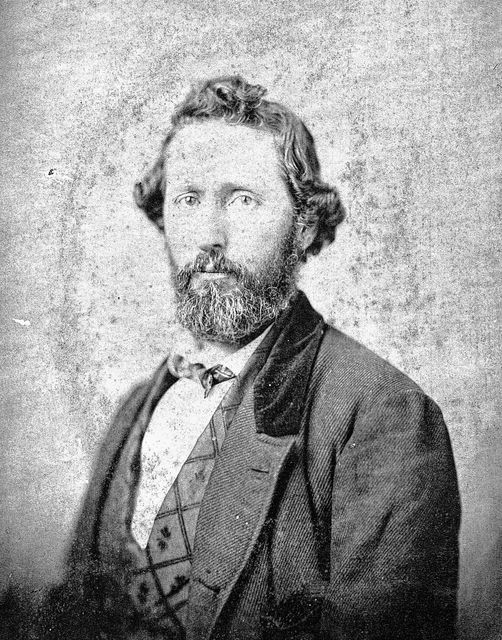
Editor’s note: For many years, local historian Jean Wallis provided a feature to The Times-Gazette called “Highland Guideposts.” She is updating and resubmitting some of those articles from time to time, including this one.
He froze time on glass. With his camera, wet plates, and “What-Is-It Wagon,” he traveled the countryside recording the latent images on glass. He never wrote a book or a printed page. However, he left a far greater heritage: photographs of people and places, many of which have long passed into oblivion.
Finley Black was born in the Hoop Ridge area of Adams County circa 1823. On July 12, 1847, he married Eliza Ann Kerr also of Adams County. Eliza was a sister to Dr. John G. Kerr, the great humanitarian doctor and missionary to China.
Following their marriage, Finley and Eliza moved to Portsmouth where they purchased five outlots in 1847 and where the family resided for the next nine years. Here were born their children, Crayton Wilson Black, Joseph Kerry Black, and James Kingsbury Black, who died at the age of one year, and a daughter who died in infancy. William McCoy Black and Judson H. Black were born after the family removed to Sinking Spring.
In 1856, Finley sold the property in Portsmouth and moved to Sinking Spring in Highland County where he went into partnership with Eliza’s nephew, Joseph Kerr Fry. In August of 1856, Finley purchased the south half of inlots 7 and 22. Here, he would live the remainder of his life.
Joseph Kerr Fry and Finley Black operated the woolen mill known as “Fry and Black.” The mill was a log structure located on in-lot 52 on the corner of Grand and Sugar Streets, the site of the first Methodist Church in the village. The mill manufactured blankets and coverlets. Many of the blankets were sold through the general store operated by Peter Noah Wickerham in Sinking Spring. In 1860, Joseph Kerr Fry died at the age of 26, leaving his widow, Sarah Amen Fry. This ended the partnership of Fry and Black.
On June 1, 1861, Finley enlisted as a private in Lieutenant Benjamin Norton’s Company I of the 24th Ohio Volunteer Infantry and was discharged on a Surgeon’s Certificate Feb. 6, 1862.
Whether Finley Black’s interest in photography developed before or after the death of Fry is not known. However, his earliest known photograph was taken in 1860. During the Civil War he was quite active in photography.
His studio was located on the second floor of a building that once stood on inlot 7. There was a large skylight and it was here he took numerous portraits of people from the surrounding countryside. However, his interest in photography seemed to lie in the out-of-doors. He traveled to various parts of the state such as Adams, Hocking, Franklin, and Greene Counties taking photographs, as well as Brushcreek Township and the Point area of Highland County.
Pictures taken by Finley Black of the cave area known today as Hocking State Forest and scenes of Columbus were used by historian Henry Howe for duplicating his pen and ink sketches published in Howe’s “Historical Collections of Ohio.”
Finley took numerous photographs of the Rocky Fork, Seven Caves and the Point area. These stereoscopic views were sold at Henry Hope’s general store located at the Point.
Finley continued to take photographs up until the time of his death. In the “Highland News” of Wednesday, Feb. 20 1883, under the Sinking Spring correspondence appeared the following item: “Mr. Finley Black, the well known photographer of this place, died very suddenly Monday, about 9 p.m. Mr. Black seemed in usual health on Sabbath evening but was taken sick in the night. The funeral took place Wednesday at 2 p.m., from his late residence. He leaves a widow and four sons.”
In “Wilson McClure’s Coffin Book” is the following entry: “Buried on the 13th of February 1884, Finley Black. He died on the 11th. The cost of his funeral expenses were $40.” He was laid to rest in the Pleasant Hill Cemetery that overlooks Sinking Spring and the “Brushcreek Hills” where he froze on glass the history of an era long past.
In April of 1884 Eliza Black and her youngest son, Judson, removed to Granville where Clayton, Joseph and William were living.


